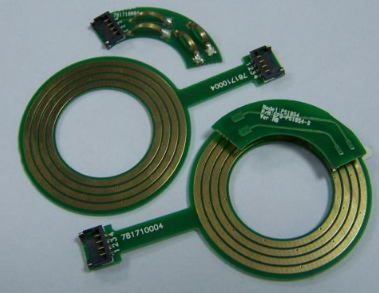Copper sulfate electroplating occupies an extremely important position in PCB electroplating. The quality of acid copper electroplating directly affects the quality and related mechanical properties of the electroplated copper layer of the PCB board, and has a certain impact on subsequent processing. Therefore, how to control acid copper electroplating The quality of PCB is an important part of PCB electroplating, and it is also one of the difficult processes for many large factories to control the process. Based on years of experience in electroplating and technical services, the author initially summarizes the following, hoping to inspire the electroplating industry in the PCB industry. The common problems of acid copper electroplating mainly include the following: 1. Rough plating; 2. Plating (board surface) copper particles; 3. Electroplating pit; 4. The surface of the board is whitish or uneven in color. In response to the above problems, some conclusions were made, and some brief analysis solutions and preventive measures were carried out.

Rough electroplating: Generally the board angle is rough, most of which are caused by the electroplating current is too large. You can reduce the current and check the current display with a card meter for abnormalities; the whole board is rough, usually not, but the author has encountered it once in the customer's place. It was later discovered that the temperature in winter was low and the content of brightener was insufficient; and sometimes some reworked faded boards were not cleanly treated, and similar conditions occurred.
Plating copper particles on the board surface: There are many factors that cause the production of copper particles on the board surface. From the copper sinking to the whole process of pattern transfer, the PCB copper plating itself is possible. The author met in a large state-owned factory, copper particles on the plate surface caused by copper sinking.
Copper particles on the board surface caused by the copper immersion process may be caused by any copper immersion treatment step. Alkaline degreasing will not only cause roughness in the board surface but also roughness in the holes when the water hardness is high and the drilling dust is too much (especially the double-sided board is not de-smeared). The internal roughness and slight spot-like dirt on the board surface can also be removed; there are mainly several cases of micro-etching: the quality of the micro-etching agent hydrogen peroxide or sulfuric acid is too poor, or the ammonium persulfate (sodium) contains too much impurities, generally It is recommended that it should be at least CP grade. In addition to industrial grade, other quality failures may be caused; excessively high copper content in the micro-etching bath or low temperature may cause slow precipitation of copper sulfate crystals; and the bath liquid is turbid and polluted. Most of the activation solution is caused by pollution or improper maintenance. For example, the filter pump leaks, the bath liquid has a low specific gravity, and the copper content is too high (the activation tank has been used for too long, more than 3 years), which will produce particulate suspended matter in the bath. Or impurity colloid, adsorbed on the plate surface or hole wall, this time will be accompanied by the roughness in the hole. Dissolving or accelerating: the bath solution is too long to appear turbid, because most of the dissolving solution is prepared with fluoroboric acid, so that it will attack the glass fiber in FR-4, causing the silicate and calcium salt in the bath to rise. In addition, the increase of the copper content and the amount of dissolved tin in the bath will cause the production of copper particles on the board surface. The copper sinking tank itself is mainly caused by the excessive activity of the tank liquid, the dust in the air stirring, and the large amount of suspended solid particles in the tank liquid. You can adjust the process parameters, increase or replace the air filter element, filter the whole tank, etc. Effective solution. After the copper is deposited, the dilute acid tank for temporarily storing the copper plate should be kept clean. If the tank liquid is turbid, it should be replaced in time. The storage time of copper immersion board should not be too long, otherwise the board surface will be easily oxidized, even in acid solution, and the oxide film will be more difficult to dispose of after oxidation, so that copper particles will be produced on the board surface. The copper particles on the surface of the board caused by the copper sinking process mentioned above, except for the surface oxidation, are generally distributed on the board surface more uniformly and with strong regularity, and the pollution generated here will cause no matter whether it is conductive or not. When dealing with the production of copper particles on the surface of the electroplated copper plate of the PCB system, some small test boards can be used to process separately for comparison and judgment. For the on-site faulty board, a soft brush can be used to solve the problem; the graphics transfer process: there is excess glue in the development (very thin The residual film can also be plated and coated during electroplating), or it is not cleaned after development, or the plate is placed for too long after the pattern is transferred, resulting in varying degrees of oxidation on the plate surface, especially poor cleaning of the plate surface When the air pollution in the storage or storage workshop is heavy. The solution is to strengthen the water washing, strengthen the plan and arrange the schedule, and strengthen the acid degreasing intensity.